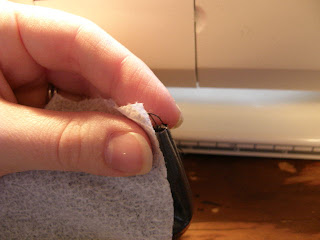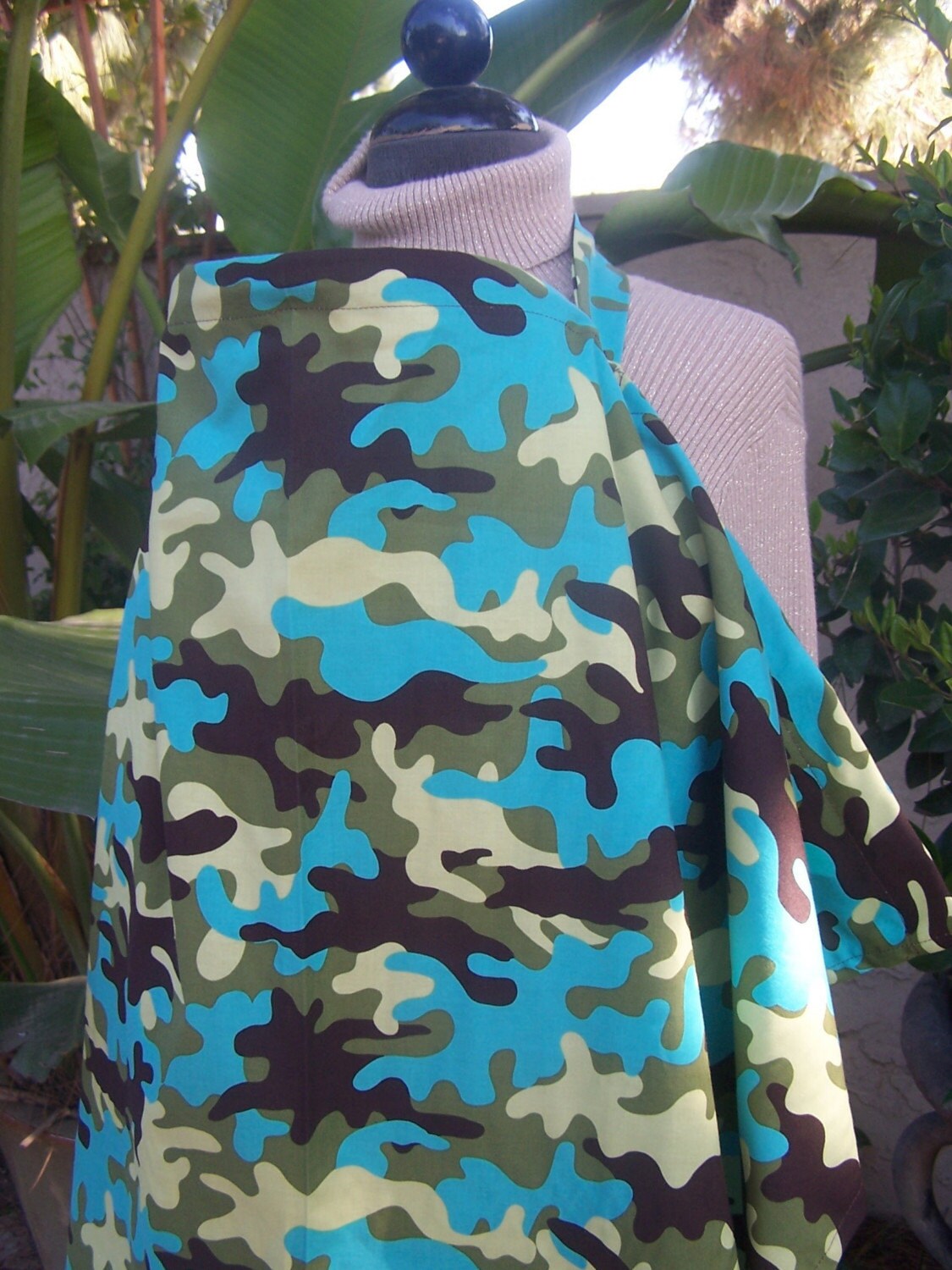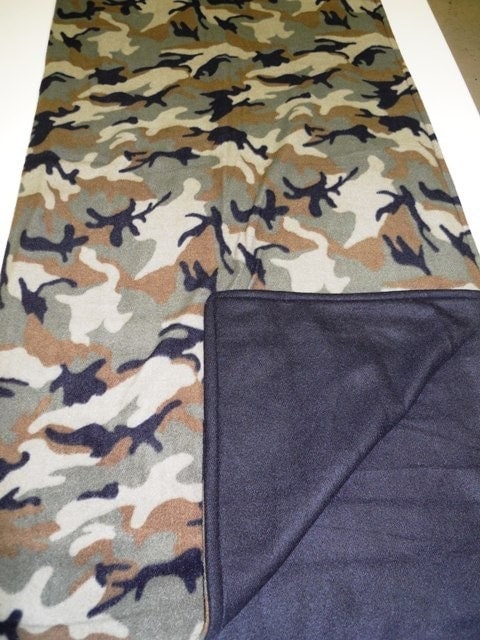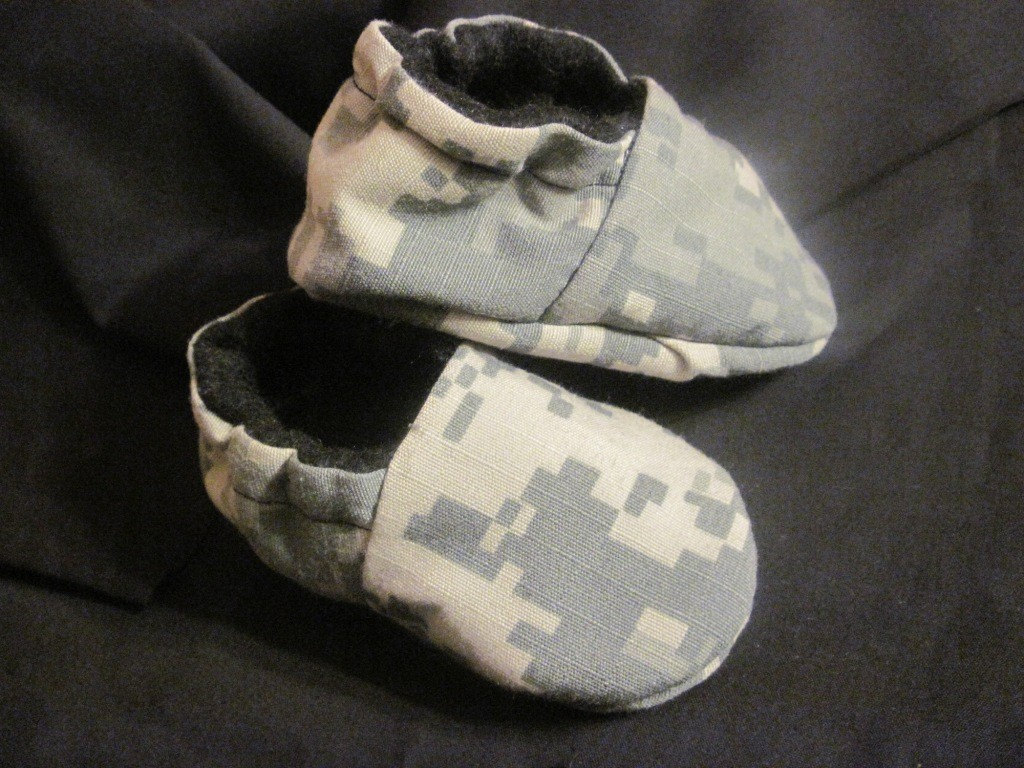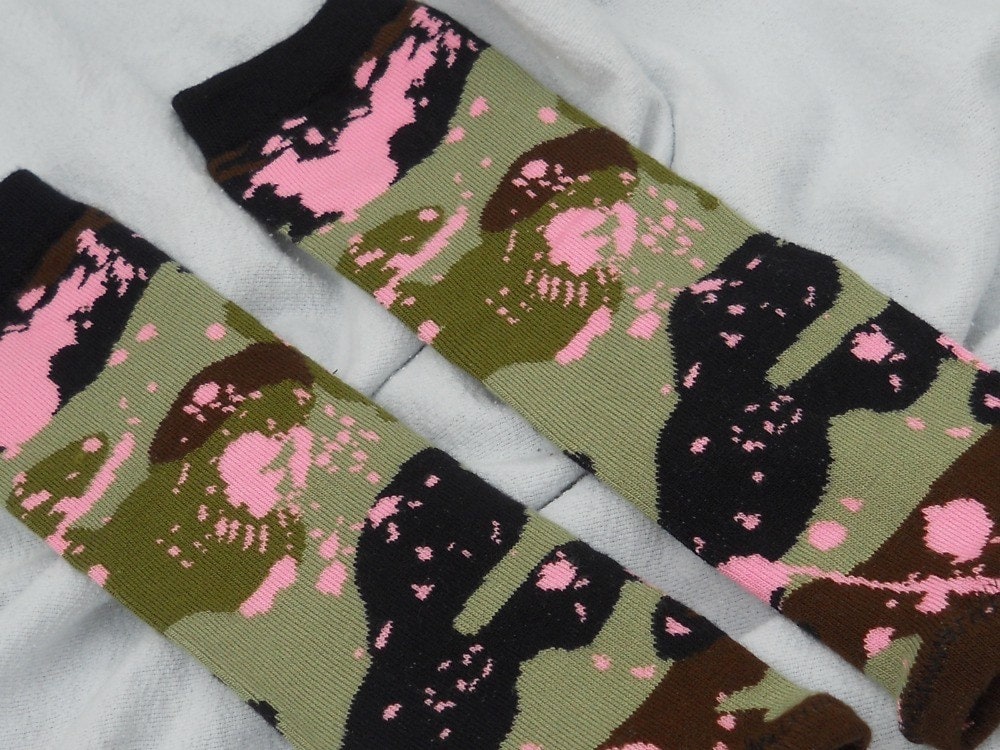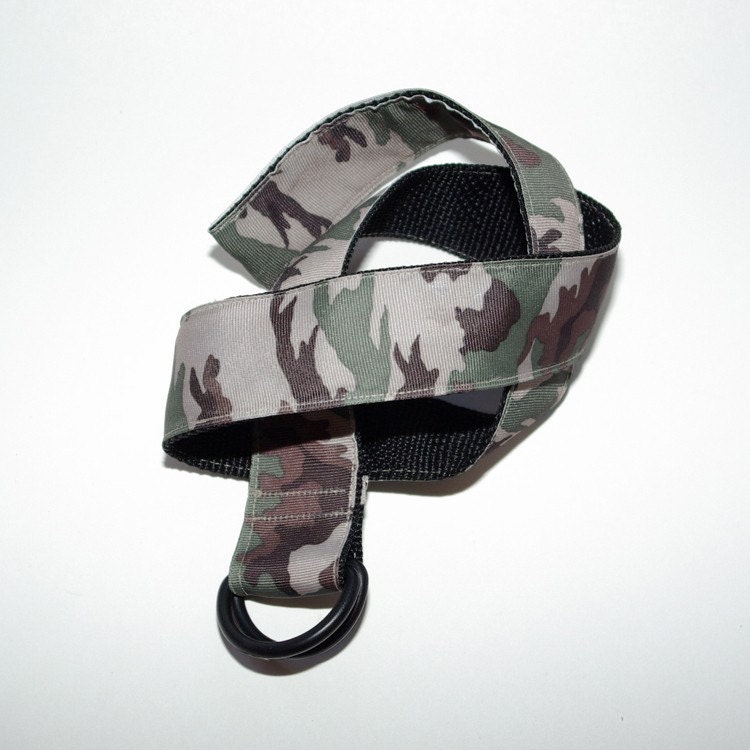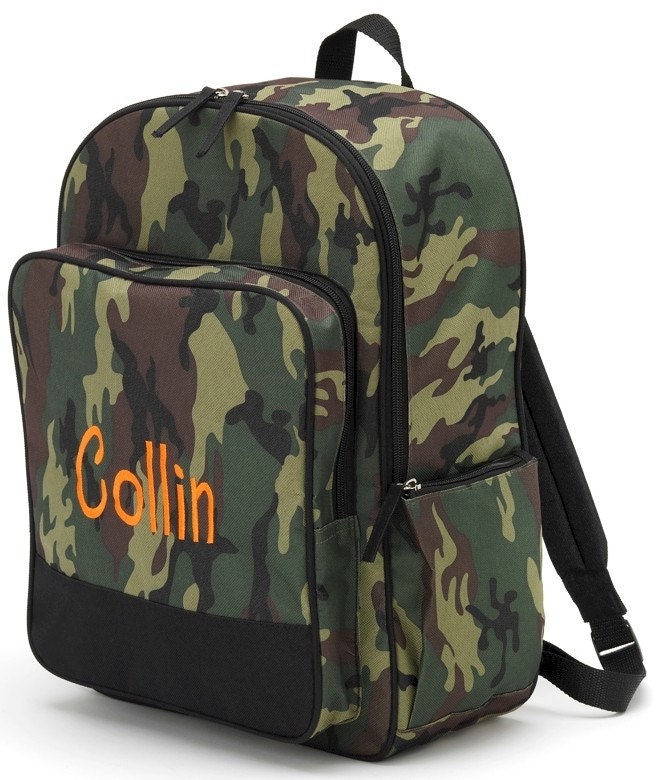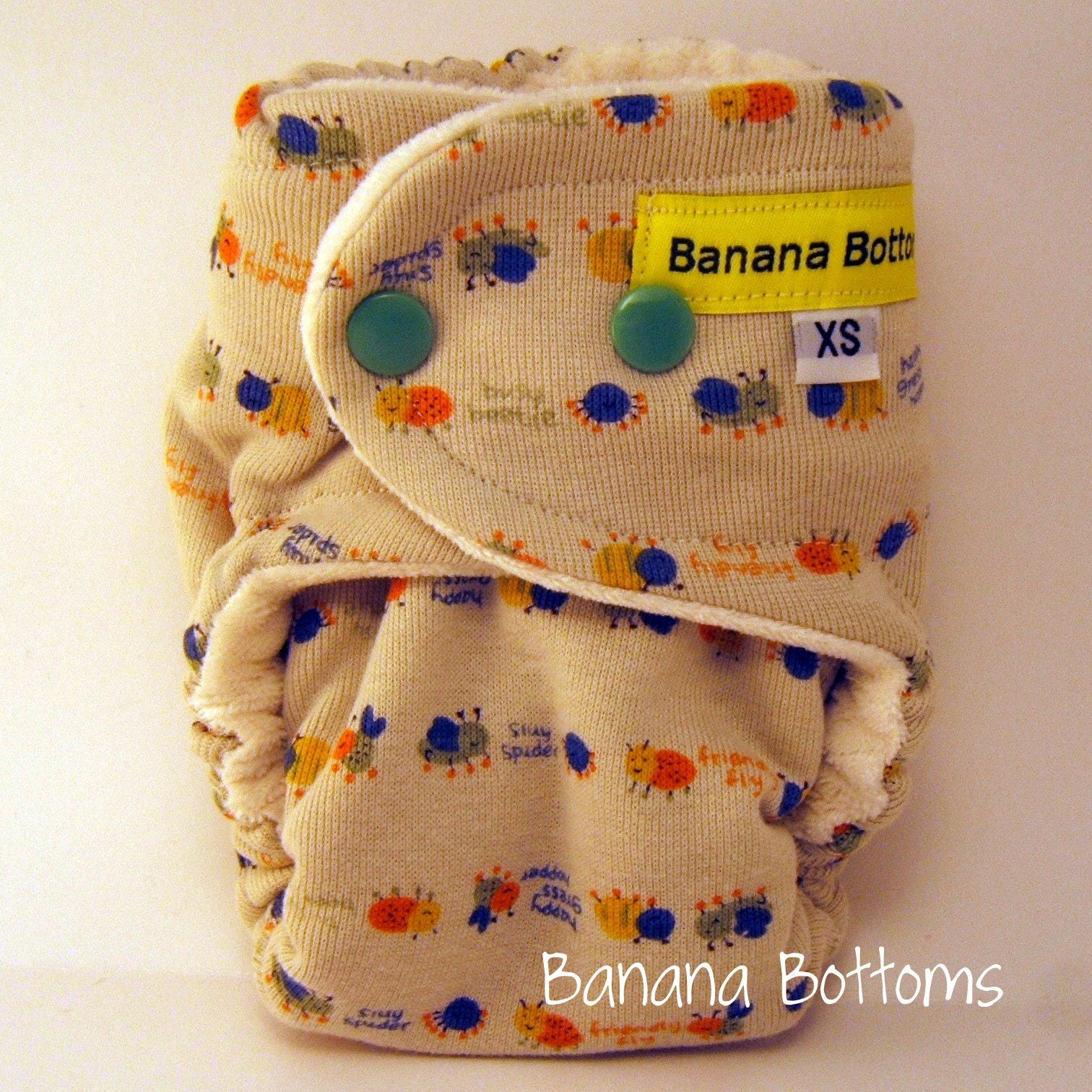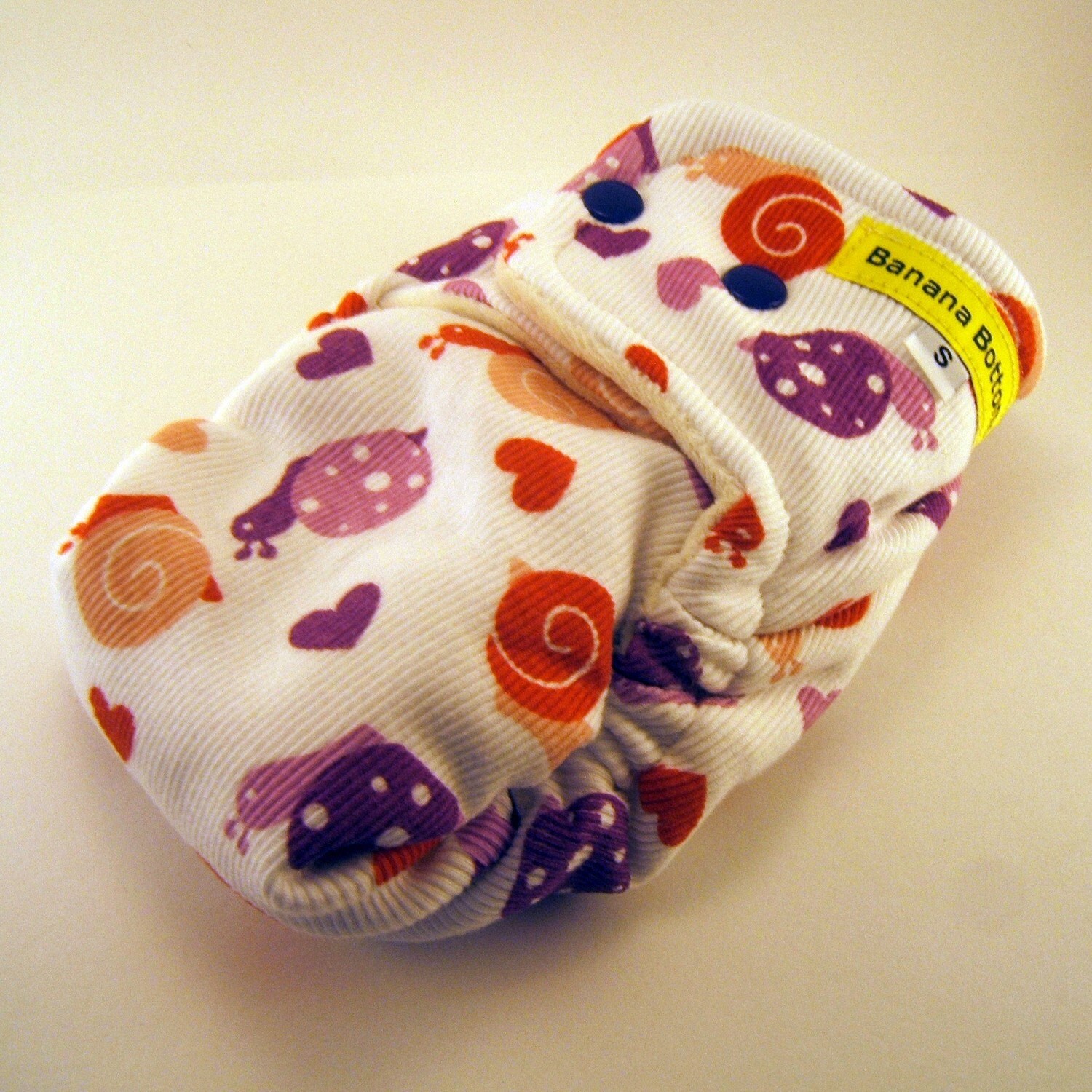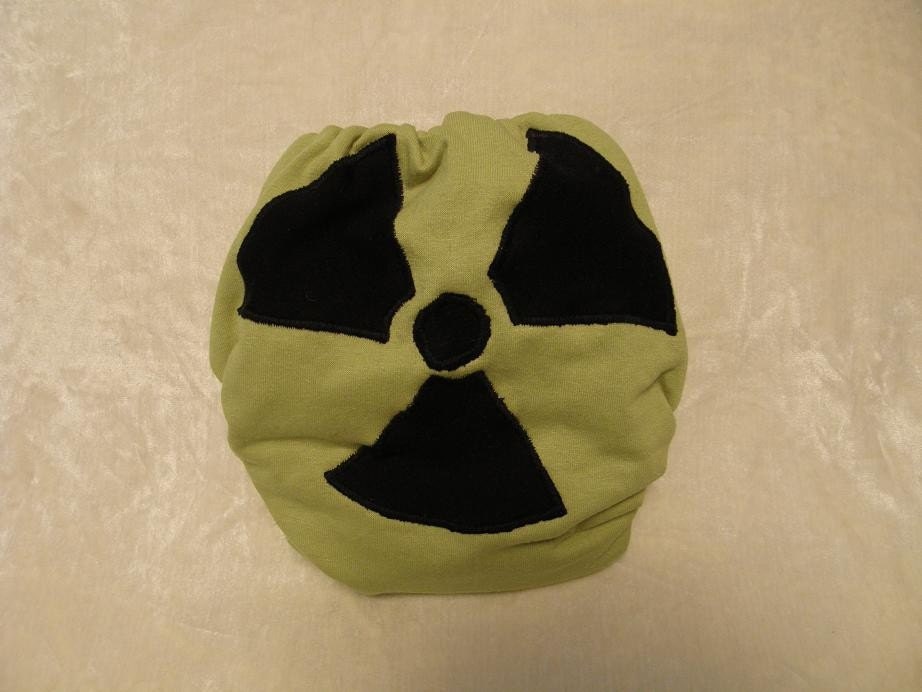If your kids are anything like mine, they take great joy in taking off their bibs... The solution? A bib with sleeves that they can't take off!
My sister in law had a few of these and I always thought they were cool, so I picked up some dishcloths on sale and started playing around until I figured out what I was doing.
Materials:
- 2 washcloths (or one hand towel cut in half could do) (I found washcloths in pairs at the dollar store) From here on in, I'll refer to the sleeves washcloth as 'stripe' and the bib front washcloth as 'red.'
- Some bias tape or cotton ribbing, at least 24" long. I cut a 1 1/2 inch strip off the bottom of a t-shirt, and didn't worry about ironing it into proper bias tape, but just rolled/sewed it down. If you're not experienced with bias tape, then using the real stuff will probably be easier. Make sure it's fat, as the washcloths can be a bit bulky.
2~ Take each of the triangles, and serge or hem across the long edge (this is the lower edge of the sleeve)
3~ fold the sleeve in half, right side in, and sew across the corner, about 2 1/2 inches up from the tip. Cut off the pointy bit beyond the seam. Repeat with other sleeve.
Now you have the uncut red washcloth, and two sleeves.
4~ Match up the lower edge of each sleeve (the part where the corner got cut off) with a corner of the red bib front. Sew just the one side of each sleeve to the red washcloth. No need to finish any edges, because they are the edges of the washcloths, so they're already finished.
 At this point, if your washcloth wasn't square, you will notice that one sleeve comes higher than the other. Don't worry about it. That happened on every bib I made. It doesn't matter, and it won't be noticeable in the final product.
At this point, if your washcloth wasn't square, you will notice that one sleeve comes higher than the other. Don't worry about it. That happened on every bib I made. It doesn't matter, and it won't be noticeable in the final product.5 ~ Cut across the corner of the red washcloth, from sleeve top to sleeve top
6 ~ Take the bias tape or ribbing, find the center, and match it with the center of your red washcloth (where you cut it off between the sleeves). Pin it first if you like, or just sew it on. Sew from the center outward on each side, with 1/4" or 3/8" seam allowance. Go over the sleeve seam and catching about 2" of the sleeve front in the tape, then have the tape go off the sleeve.
7a ~ (if you're using a strip of something rather than regular bias tape) Flip the bib over and fold the strip down in half so that the seam allowance and the strip meet in the middle.
7b ~ fold down the tape/strip onto the back of the bib, so that all raw edges are tucked inside. Sew along the edge of the tape, catching both front and back of it in the stitching. When you get out the sides (past the edge of the 2" of sleeve you caught before), then sew the tape to itself, creating a tie.
One of the great perks of using a washcloth as a bib? When the kiddo is done eating, use the bib to wipe up the tray/chair as well! That has proven to be really nice when we are away from home!




















